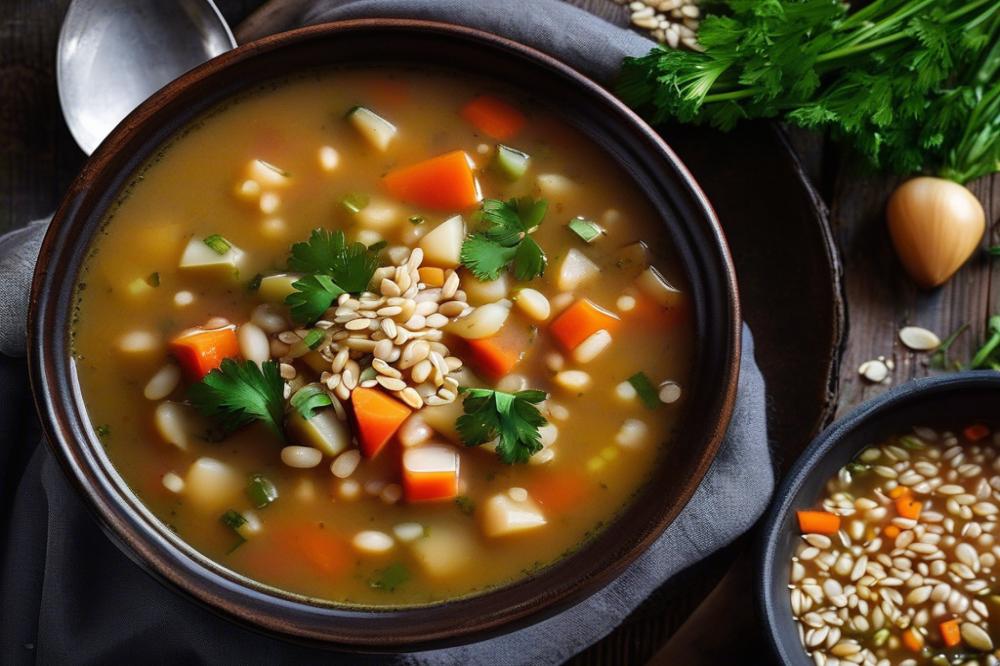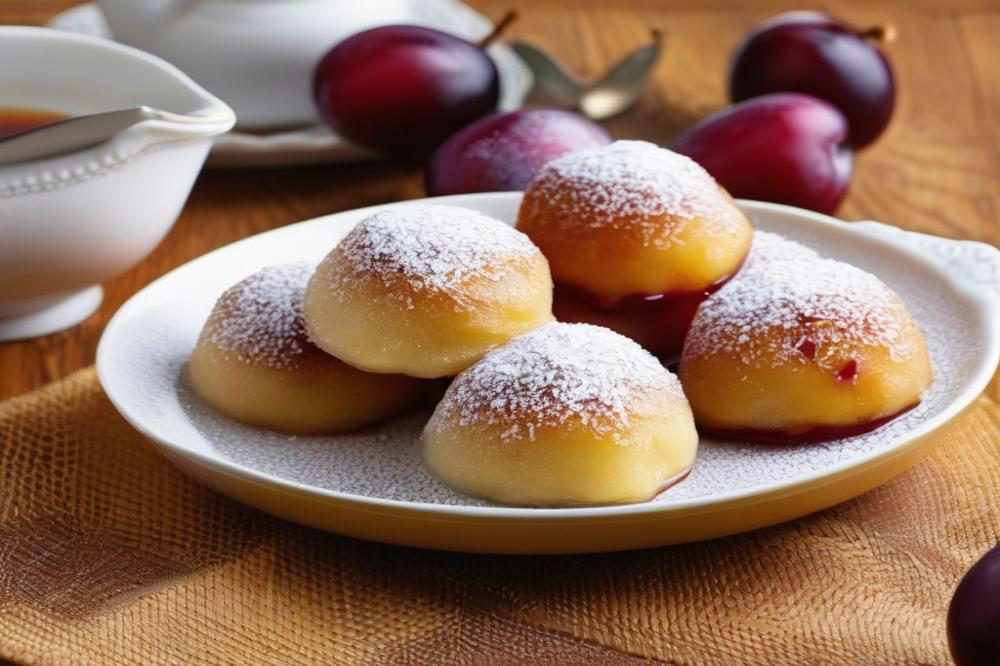Introduction
In Portugal, snails are more than just an ordinary snack; they hold a prominent place in the heart of its culinary traditions. Known as Caracóis, these delightful delicacies are often enjoyed in casual settings, particularly during warm months. Families and friends gather to savor this seafood treat, celebrating the shared experience of cooking and eating together.
The preparation of Portuguese snails involves a simple yet flavorful recipe. Many people enjoy them steamed or boiled, allowing the natural taste to shine. A fragrant mixture of garlic and herbs is often combined with olive oil, creating an irresistible aroma that fills the air. This blend not only enhances the snails but also embodies the essence of traditional Portuguese cuisine.
These snacks are typically served warm, often accompanied by crusty bread for dipping. As one bites into the tender flesh, the rich flavors of seasoned oil envelop the palate. Many love to pair them with a chilled glass of vinho verde, making the experience even more enjoyable. The joy of sharing such dishes with others reflects the communal spirit that defines Portugal’s food culture.
Whether enjoyed at roadside cafes or family gatherings, Portuguese snails are a cherished part of life. Their preparation may vary from region to region, but the appreciation for this unique dish remains constant. Exploring the flavors of Caracóis connects people to the rich heritage and culinary diversity that makes Portuguese cuisine so special.
History of Caracóis in Portugal

For centuries, snails have found their place on Portuguese tables. This tradition has roots in the country’s agricultural past and a strong connection to the natural environment. Snail gathering, or “caracolagem,” started as a practical means of utilizing abundant resources. Many rural communities viewed snails as a valuable food source, especially during lean times.
In terms of preparation, several methods have emerged over the years. One popular technique involves boiling the snails in a mixture rich with garlic, herbs, and olive oil. This simple recipe enhances their flavor and creates a delightful snacking experience. Variations exist across different regions. In the Alentejo, for example, snails are often spiced with piri-piri, adding extra heat. In coastal areas, seafood influences preparation styles as local ingredients are incorporated.
Caracóis highlight the essence of Portuguese culinary traditions. They capture the spirit of community and resourcefulness, traits that define much of the country’s food culture. Celebrations and gatherings frequently feature these snails, showcasing their importance in social life. Throughout Portugal, this unique snack resonates with many, from street vendors to home cooks.
Much of the charm comes from the way people enjoy them as a casual meal. Friends and family often gather to share a plate, dipping bread into the flavorful broth. The simplicity of cooking them, paired with fresh ingredients, reflects a deep-rooted appreciation for authentic flavors. Many Portuguese enjoy them as a special treat, celebrating the local harvest.
Overall, the history of snails in Portugal paints a picture of tradition and innovation. Each region brings its flair, making the experience diverse and rich. This simple yet flavorful delicacy continues to endure, connecting generations through shared recipes and memorable gatherings.
Ingredients and Preparation

Preparing this traditional Portuguese snack is simple. Gather the following ingredients to create a delicious dish that highlights the unique flavors of the sea. You will need:
- Fresh snails (500g)
- Olive oil (60ml)
- Garlic (4 cloves, minced)
- Fresh parsley (30g, chopped)
- Bay leaves (2)
- Paprika (1 tsp)
- Salt (to taste)
- Black pepper (to taste)
Preparation Method
First, clean the snails thoroughly in water. This step is crucial to remove any dirt. Next, boil them in salted water for about 10 minutes. After that, drain the snails to prepare for cooking.
In a pan, heat olive oil over medium heat. Sauté garlic until it becomes golden. This should take a couple of minutes. Then, add the cleaned snails to the pan along with the chopped parsley, bay leaves, paprika, salt, and black pepper. Stir everything together to coat the snails evenly.
Let the mixture cook for around 5-7 minutes. Stir occasionally to prevent sticking. The combination of flavors will create a mouthwatering aroma.
Finally, serve the dish hot with fresh bread. Bread complements this seafood dish beautifully, allowing you to soak up all the rich flavors.
Nutritional Information
Understanding the nutrition in this recipe can enhance your cooking experience. Here’s a breakdown of key nutrients for each ingredient:
Fresh snails are low in calories, roughly 90 calories per 100g. They also provide protein, around 16g, and are rich in iron and omega-3 fatty acids.
Olive oil offers healthy fats, approximately 119 calories per tablespoon. It contributes monounsaturated fats that are beneficial for heart health.
Garlic has many health benefits and contains about 4 calories per clove. It is known for its antibacterial properties and has beneficial effects on the immune system.
Fresh parsley contains essential vitamins. It has about 4 calories per tablespoon and provides vitamin K, which aids in bone health.
Bay leaves are often overlooked in terms of nutrition. They contain minimal calories but have antioxidant properties.
Paprika adds a burst of flavor with just 6 calories per teaspoon. It’s also packed with antioxidants.
Salt and black pepper enhance the overall taste but should be used in moderation, especially for those watching sodium intake.
Serving Suggestions

Caracóis, the delicious Portuguese-style snails, can be served in various appetizing ways. Begin with a simple presentation. Use a shallow dish to display the snails neatly. This allows guests to enjoy their appearance before indulging. For added flair, sprinkle fresh herbs such as parsley or cilantro on top. These bring vibrant colors and additional flavors that complement the dish.
A classic addition is lemon wedges. Placing them around the dish not only enhances visual appeal but also provides a bright, zesty flavor that cuts through the richness of the garlic and olive oil used in the cooking. When guests want to squeeze some fresh juice over the snails, it elevates the experience. This traditional recipe often benefits from a touch of acidity.
Consider offering a selection of dipping sauces on the side. A garlic butter sauce could be a great choice, pairing perfectly with the snails. Another option is a spicy chili oil that adds a kick. Each guest can customize their snacking experience according to their taste preferences. It makes the dish feel more personal and engaging.
When it comes to beverages, options abound. A chilled vinho verde is a refreshing match for snails. Its lightness works harmoniously with the seafood flavors. Portuguese beer is another suitable choice. The crisp, clean taste contrasts well with the richness of the garlic and herbs, creating a delightful balance on the palate.
For a more robust experience, consider pairing the dish with a light white wine. The crispness will enhance the flavors of the herbs and olive oil, ensuring each bite is savored. Selecting the right drink can truly elevate the simple snack into a memorable occasion. It’s all about preferences and the right combinations.
Variations of Caracóis

Cooking methods for snails can vary greatly. In different regions of Portugal, you’ll find unique twists in recipes. Some areas prefer spicier versions, adding red pepper flakes to the mix. These fiery notes contrast beautifully with the natural flavor of the snails.
Herbs also play a significant role in the preparation. Traditional recipes often call for parsley or cilantro. These fresh herbs bring brightness and enhance the overall taste. In coastal regions, you might notice the inclusion of seafood elements. A splash of lemon juice or a hint of fish sauce can elevate the dish.
Olive oil remains a staple in most recipes. Its rich flavor complements the garlic used in cooking. The garlic is often sautéed until golden, adding depth to the dish. Variations can include different types of garlic, such as black garlic for a sweeter taste.
Looking beyond Portugal, Mediterranean cuisines present their own interpretations of snails. In France, a common dish is escargot, often prepared with butter and herbs. The French tend to use a simpler approach, focusing on the snails themselves. Italian cuisine sometimes incorporates snails into pasta dishes, blending broader textures and flavors.
Spices like saffron can also be a delightful addition in some regions. This aromatic spice adds color and a subtle sweetness to the mix. While the classic methods hold a special place, creativity in preparation can lead to exciting taste discoveries.
Cultural Significance of Eating Caracóis
Eating snails is more than simply enjoying a dish. The social aspect of savoring Caracóis plays a big role in Portuguese culture. These snails are often served as a shared snack among family and friends. When gathering, people create a warm atmosphere around the table. Sharing this recipe brings joy, laughter, and camaraderie.
Various occasions celebrate the enjoyment of these snails. Family gatherings frequently feature Caracóis, especially during summer months. Outdoor events also highlight this dish. Barbecues and picnics thrive on this delicious seafood preparation. Friends often sip wine while savoring the snails, enhancing the experience.
Cooking these snails involves a delightful process too. Fresh garlic and herbs are essential in the preparation. The aroma fills the air, inviting everyone nearby to join in. Olive oil elevates the flavor, making the dish even more irresistible. Each bite not only offers taste but also connects people to Portuguese traditions.
Cuisine in Portugal signifies more than just food. It reflects local customs and creates memories. Consuming Caracóis contributes to the unity of people. Generations pass down these recipes, binding together families over time. Festivals in coastal towns also celebrate this seafood, showcasing cultural heritage through food.
Final Thoughts on Caracóis
A delightful experience awaits anyone who tries this traditional Portuguese snack. The rich flavors of garlic and herbs mingle beautifully with the snails, creating a dish that is full of character. These morsels might seem unusual to some, but they truly reflect the culinary heritage of Portugal.
Cultural significance surrounds this dish, adding to its charm. Enjoyed in local taverns and markets, they bring people together through shared taste and vibrant discussions. Preparing them at home is not only rewarding but also connects you to a rich tradition.
For those adventurous in the kitchen, this recipe opens the door to explore something different. The unique combination of ingredients makes for a memorable treat. Friends and family will surely be impressed when you share this dish.
Your taste buds will thank you as you enjoy a plate of Caracóis. Trying this recipe is a celebration of flavors and culture. Take this opportunity to experience something new. Embrace the culinary adventure and savor the joys of this delicious snack!



